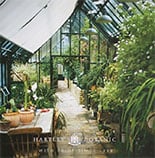I have a VERY soft spot for the daffodil because they brighten up March, a month that often promises spring but doesn’t always deliver sadly. Almost twenty years ago, after moving to Spring Cottage in December 2005, I was thrilled to see lots of daffodils popping up in the garden because it had appeared to be devoid of anything at all. They were a lovely surprise. Many would have been planted decades ago and they were not showy affairs. They were simple trumpet daffodils in various shades of yellow and they were followed by creams and whites, so there produced a display from March until early May. This is generally the pattern with daffodils – the whites and creams generally follow on from the yellows.
I have to confess I prefer the subtler paler yellows, whites and creams. I find the bright-yellow jobs a little garish and (dare one say) threatening. However, I do grow one bright-yellow called ‘Rijnveldt’s Early Sensation’ because it flowers so early that I would forgive it anything – even its brash colour. If we’ve had a mild autumn, the yellow trumpets can appear by November. In cooler years it will flower by late-January or February so I turn a blind eye to my colour prejudice just because it arrives before any other tall daffodil.
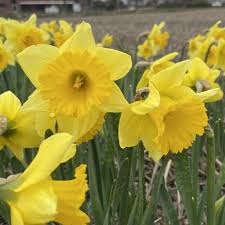
C. Peter Nyssen
I first encountered ‘Rijnveldts’ Early Sensation’ in the early 1990s and it was an expensive bulb that was sold singly for a lot of money. However, the Dutch bulb growers grow thousands of them now, so it’s become affordable and widely available. I always have a tubful by my door as a beacon of hope as well as a few in the garden. You may imagine that ‘Rijnveldt’s Early Sensation’ was raised in The Netherlands, judging by the name. However, it was actually raised by an English daffodil breeder named F.H. Chapman in 1943, according to the International Daffodil Checklist. The website Daffseek also gives information on daffodils.
Herbert Chapman (1870 – 1945), as he was more widely known, lived in Rye and then at Peasmarsh in Sussex. He named his prized daffodil ‘Early Sensation’, but it was re-christened and re-registered in 1956 by F. Rijnveld & Sons of Holland. They got all the credit and one feels for Herbert, who survived two World Wars close to the vulnerable south coast. He died in reduced circumstances.
Chapman was a member of Midland Daffodil Society and thirty-six of his daffodils were ‘Poets’, or small cupped daffodils raised from N. poeticus. An article taken from The American Daffodil Journal of 1981, tells us that in his early twenties Herbert Chapman had a nursery known as Rotherside Gardens at Rye near the Rother River in Sussex, England. The article goes on to say that Mr Chapman began to cross-fertilise daffodils in 1904 having grown them commercially for about twenty years. He was a prominent member of the RHS Narcissus and Tulip Committee and he rubbed shoulders with famous daffodil men including the Reverend G. H. Engleheart, P.D. Williams, and A.M. Wilson. Many of the daffodils they raised were more suited to the show bench than the garden.
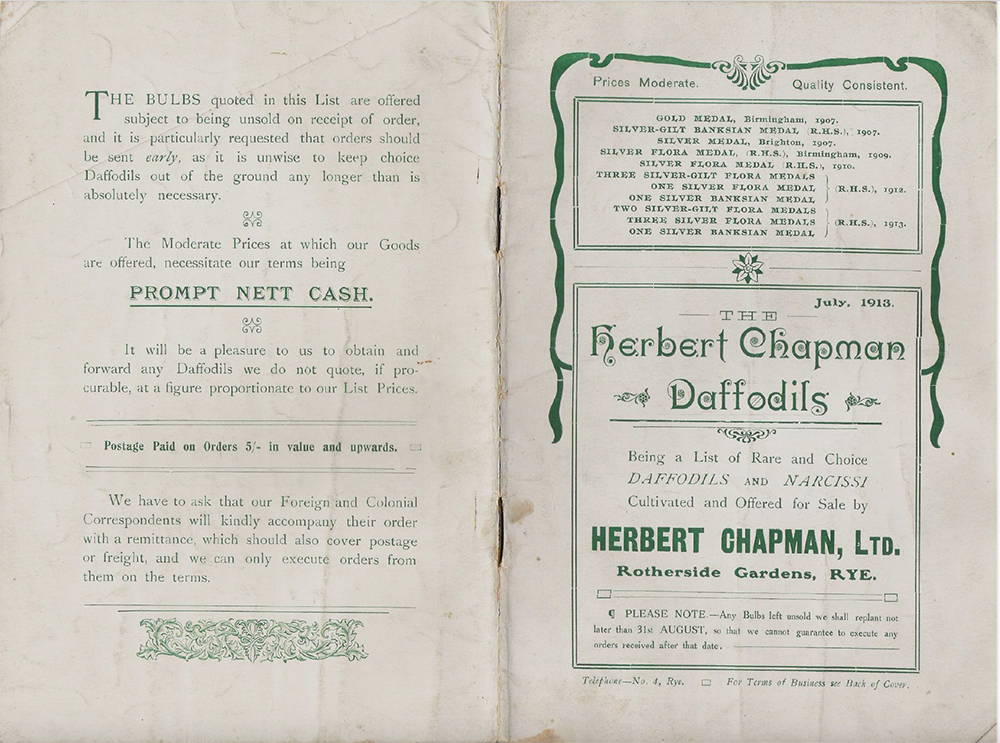
Chapman’s bulbs were not cheap. His 1913 catalogue (https://dafflibrary.org/wp-content/uploads/Chapman-1913.pdf) lists the long-gone ‘Formula’ and ‘Maid of Honour’ at £4.4s per bulb. ‘Torso’, a poeticus cross raised by him, was a mighty £15.00. This man was obviously obsessed with refined late flowering poet’s narcissi, the ones with pale outers and small red or orange cups.
Nothing could be further away from his neatly cupped, tasteful ‘poets’, than the brash large trumpeted ‘Early Sensation’. Perhaps the bees delivered this early yellow trumpet all on their own, because I can’t imagine Herbert breeding it deliberately. Herbert’s Poets have long gone, although they have been used in breeding lines, so ‘Rjinveldt’s Sensation’ is probably his only surviving daffodil, despite the fact that he made nothing from it.
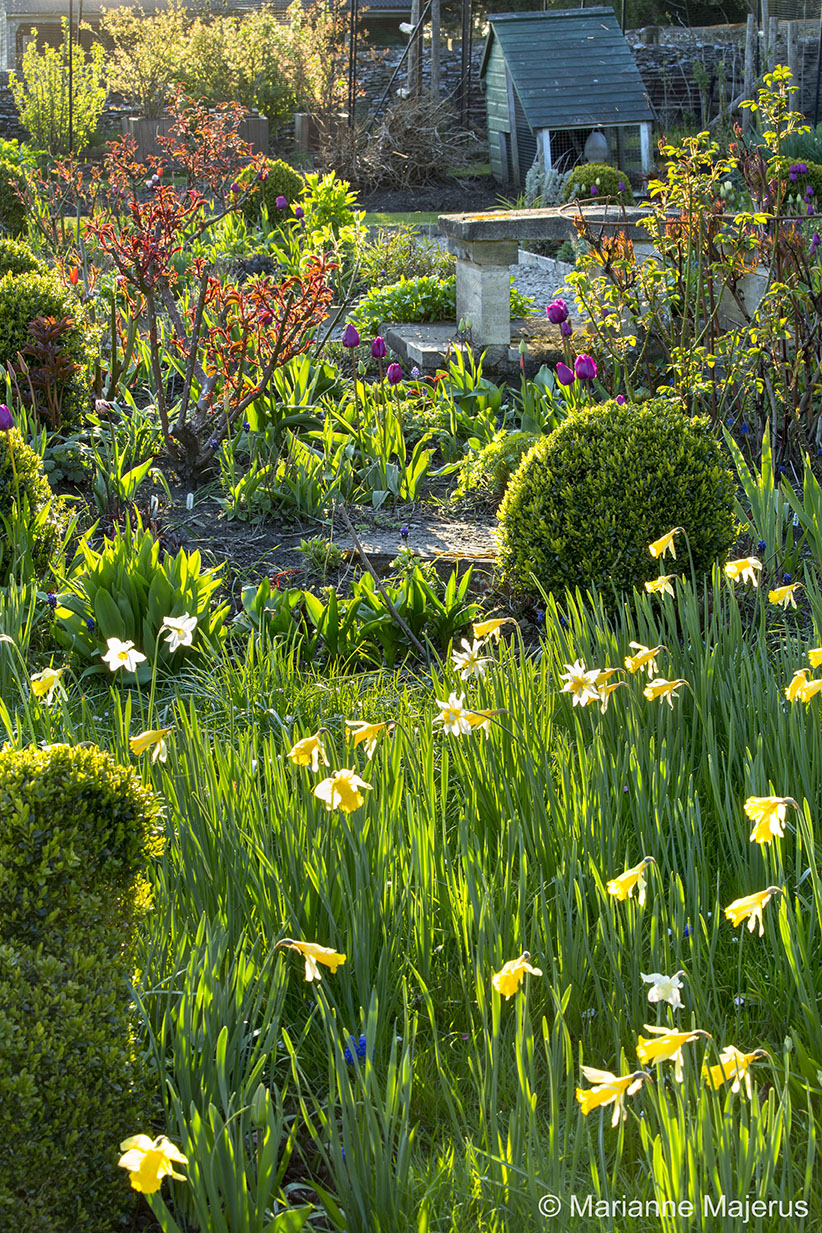
C. Marianne Majerus
At a recent HPS Western Counties meeting held in January 2025 I saw another early daffodil, but this one was named ‘Spring Dawn’ and it was a two-tone pallid yellow trumpet daffodil similar in shape to ‘Rijnveldt’s Early Sensation’. This was raised at Rosewarne Experimental Horticultural Station in 1986, by O and A. Taylor. For the cut flower growers. It is still widely sold. They also raised ‘January Silver’, syn. Melyor, and this is pre-1985. Both are hybrids involving ‘Rijnveldt’s Early Sensation’. There were a number of these hybrids raised for the Cornish cut flower trade.
‘Winter Waltz’ is another relatively early trumpet daffodil, reaching 15 inches or 40cm. This American-bred daffodil was named in 1975 and then registered in 1988. It was given an AGM by the RHS in 2023. I have grown two forms of this cyclamineus daffodil. The Dutch-grown bulbs have a darker orange trumpet than the originals I was given by a gardening friend. The swept-back outers of both are cream. However (which ever colourway you get) they will flower by mid-February in most years so I also have a potful of this by my door. These are all available from catalogues such as Peter Nyssen and Parkers.
‘Golden Echo’ (2014), although not so early, is another personal favourite because its Jonquil parentage provides a sweet, yet strong, scent that carries. The outers are a soft-yellow and the trumpet is a warmer shade of yellow and it looks delicate. However, the flowers are very weather resistant, probably because it was raised in Virginia in the USA by Brent C. Heath. This one’s widely sold and it’s out in March and the flowers last for ages. This is my Desert Island potted-up narcissus and I’m pleased to say the King also loves the fragrance and I first saw it at Highgrove. It will reach about 18 inches (45cm) in a pot. It’s readily available.
‘Keats’ is another favourite potful by my door, although this is a late arrival to the Bulb Ball. The white flowers have six well-spaced oval petals set round a yellow button middle with prominent green stamens. This hard-to-find narcissus was raised in 1958 by Alec Gray, a Cornish fruit and cut flower grower from Cranbourne. This delicate just-over-a-foot high daffodil is not always available but if you do see it, grab it.
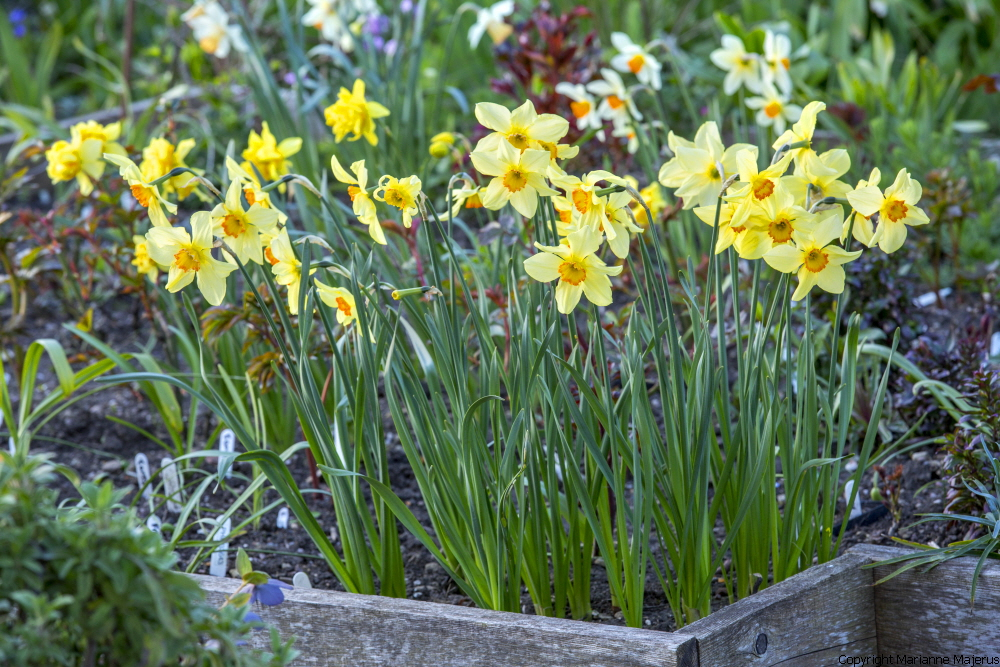
C. Val Bourne
Many of our miniature narcissi were raised by Alec Gray (1895- 1986) and they, just like Herbert Chapman’s ‘Early Sensation’, were an unintentional happy accident. Gray used the money he made on selling bulbs and flowers to go on bulb collecting trips to Spain. He collected Spanish narcissi species and crossed them with cut flower varieties with the intention of breeding early flowering narcissi, because they merited a higher price at flower markets. Unfortunately, all his seedlings were diminutive in stature and no use as cut flowers, but Alec Gray fell in love with them and went on to name 110 over 59 years.
His great breeding breakthrough followed the Second World War, when a lot of varieties (which were normally sterile) set seeds following the hot summer of 1947. He gathered one particular pod from ‘Cyclataz’ and it contained three seeds which he then sowed. One was subsequently named ‘Jumblie’, a twin-headed yellow with swept-back petals. Another was ‘Quince’, a fairly rare multi-headed soft-yellow. The third was his famous ‘Tête àTête‘. All three were crosses between N. cyclamineus and the orange and yellow ‘Soleil d’Or’. His ubiquitous Tête-à-Tête’ (pre-1949) is almost certainly the most widely grown narcissus in commerce, although. Don’t let familiarity breed contempt: it’s a great think and there are double forms too.
You may also spot ‘February Gold’ in next Autumn’s bulb catalogues. This naturalises very well in warmer gardens. However, this Dutch variety, raised by de Graafe Bris of Holland in 1923, is not listed as a miniature because it’s just over a foot high. ‘Jetfire’, an American variety raised by Grant Mitsch of Oregon in 1969, is also slightly too tall for a miniature as well. It has the reddest trumpet of all the shorter daffodil and it naturalises well in grass, lasting for many a year.
I can’t name the older daffodils in my garden but some of them are poets, also known as pheasant’s eye daffodils. When I’m walking round, I wonder how many were influenced or bred by Herbert Chapman. If only they could talk back!

